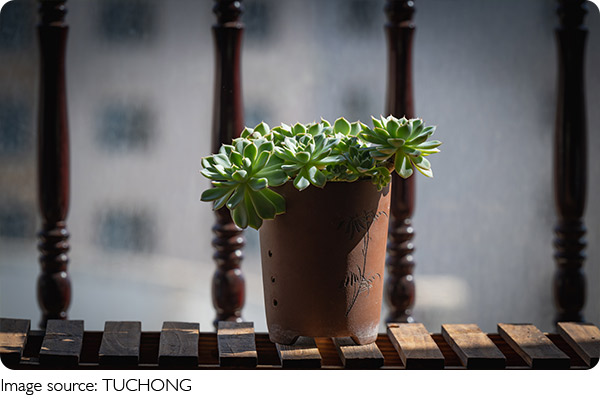Why Plants Rest at Night

Have you ever wondered why plants seem to "pause" their work once the sun sets? Unlike animals, plants don't move or sleep in the usual sense, but they do follow a strict daily routine.
One of the most fascinating aspects of this routine is how they stop photosynthesizing at night.
It's not simply because there's no sunlight—there's a deep connection between photosynthesis and the plant's internal clock, or circadian rhythm. Understanding this relationship reveals how plants have evolved to thrive in a world of day and night.
Photosynthesis Needs Light: The Obvious Part
First, it's important to know that photosynthesis, by definition, requires light. This process uses sunlight to convert carbon dioxide and water into glucose and oxygen. The key player here is chlorophyll, which captures light energy and starts the chemical reactions.
Without light, the initial energy-harvesting steps cannot occur. So, at night, when there's no sunlight, photosynthesis simply cannot happen.
But this is only half the story.
The Plant's Internal Clock: More Than Just Darkness
Plants, like many living organisms, have a built-in biological clock known as the circadian rhythm. This roughly 24-hour cycle helps plants anticipate changes in the environment and prepare accordingly.
Research shows that plants don't just passively respond to light; their photosynthesis machinery actually follows this clock. For example:
• During the day, the plant "turns on" genes related to photosynthesis, preparing leaves to capture sunlight efficiently.
• As evening approaches, these genes get "turned off" or downregulated even before total darkness falls.
• At night, plants shift their focus to other tasks, such as cell repair, nutrient transport, and energy storage.
This internal timing system helps plants optimize their energy use and avoid wasting resources.
Why Not Photosynthesize at Night With Artificial Light?
You might think that if photosynthesis requires light, then providing artificial light at night would keep the process going. While plants can photosynthesize under artificial light, many species still reduce their activity.
Why? Because the circadian rhythm influences more than just light perception. It regulates the expression of hundreds of genes and the availability of enzymes that drive photosynthesis. Even with artificial light, the plant's internal clock can limit photosynthetic efficiency during the "subjective night" phase.
This shows that plants are programmed to balance energy capture with other vital functions in a daily cycle—not simply turning on photosynthesis whenever there's light.
Nighttime: A Time for Respiration and Repair
While photosynthesis pauses at night, plants don't just "rest." They perform cellular respiration, breaking down stored glucose to release energy for growth and maintenance.
At night, plants:
• Repair damage to DNA and proteins caused by daytime stress, such as intense light or heat.
• Redistribute nutrients absorbed during the day.
• Grow new cells, extend roots, and strengthen tissues.
This division of labor—photosynthesis during the day, repair and growth at night—makes plants more resilient and efficient.

Implications for Gardening and Agriculture
Understanding the link between photosynthesis and circadian rhythms can help gardeners and farmers improve plant care.
1. Timing of Watering and Fertilizing: Since plants uptake nutrients and water more actively at certain times, scheduling these during early morning or late afternoon aligns better with their natural rhythms.
2. Use of Grow Lights: Providing artificial light 24/7 isn't necessarily beneficial; many plants need a dark period to maintain healthy rhythms. Overexposure can lead to stress or weaker growth.
3. Crop Breeding: Some modern research aims to breed plants with altered circadian clocks to improve productivity under different light conditions, such as in northern regions with long daylight hours.
A Natural Balance
Plants are not just passive organisms reacting to sunlight; they are finely tuned to the daily cycle of light and dark. Their ability to pause photosynthesis at night is part of a larger, elegant system balancing energy capture, growth, and survival.
So next time you watch a plant in your home or garden, remember: even when it seems still at night, it's actively working—just in a different way. Understanding this natural rhythm can deepen your appreciation for the quiet, ongoing life happening all around you.
What changes will you make to your plant care routine now that you know plants have their own "night shift"?
-
 Digital StorytellingMaster Digital Storytelling On Social Media: Transform Your Brand Into An Unstoppable Magnet!
Digital StorytellingMaster Digital Storytelling On Social Media: Transform Your Brand Into An Unstoppable Magnet! -
 Breaking Injury CurseHow NBA Players Beat the Injury Curse: Doctors Reveal the Secrets Behind Their Recovery Plans!
Breaking Injury CurseHow NBA Players Beat the Injury Curse: Doctors Reveal the Secrets Behind Their Recovery Plans! -
 Managing Teen StressWhat can parents do to help their teenagers manage stress? Here's what we should know!
Managing Teen StressWhat can parents do to help their teenagers manage stress? Here's what we should know!